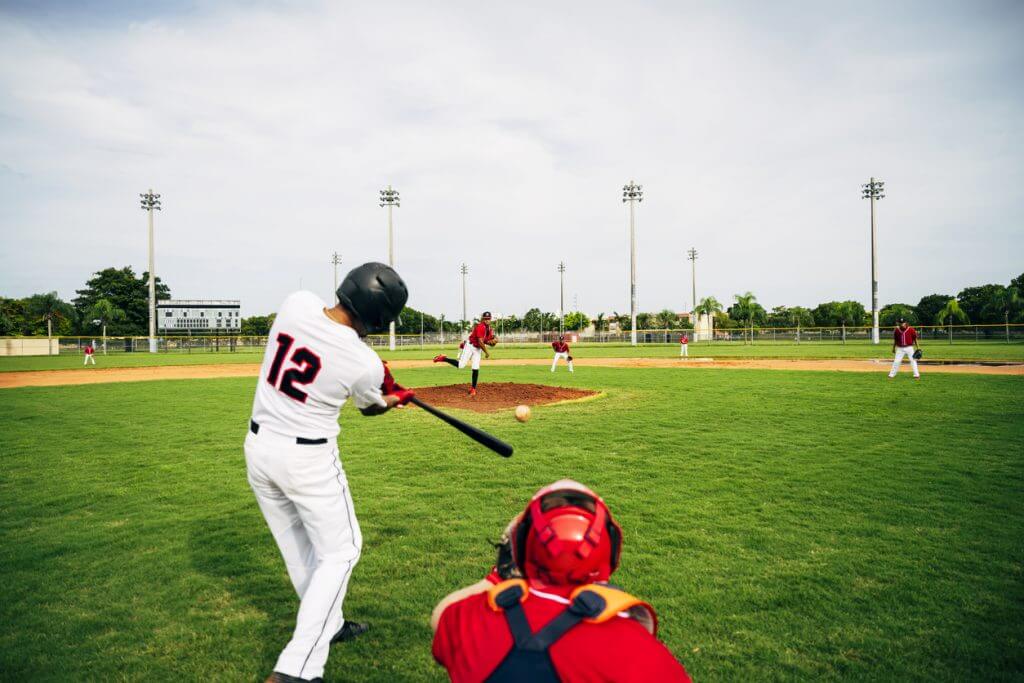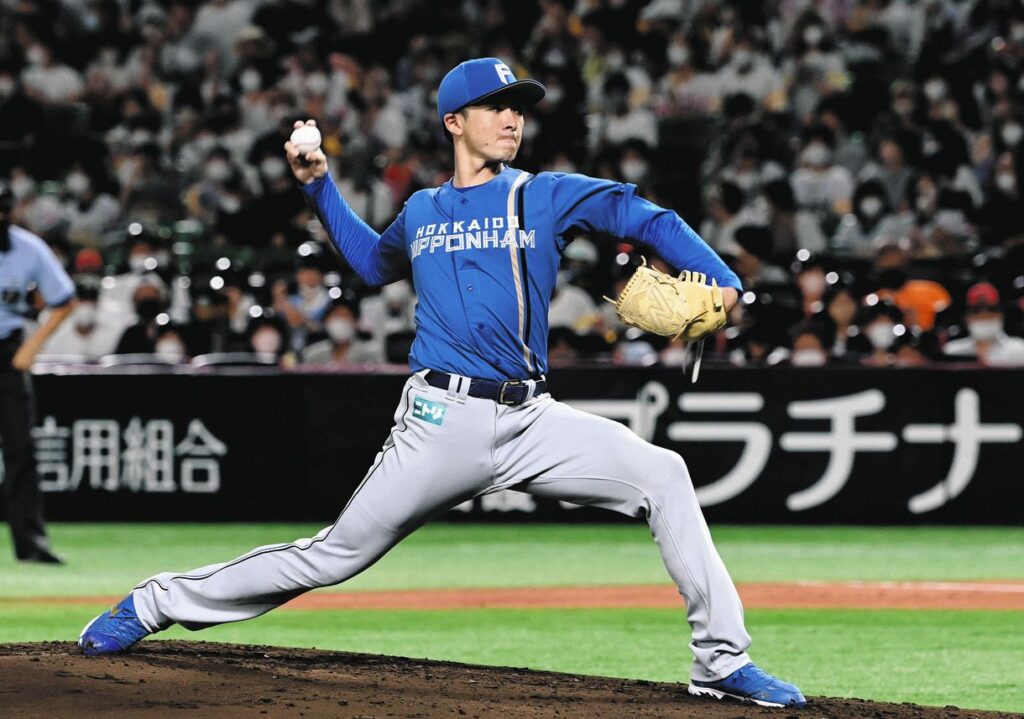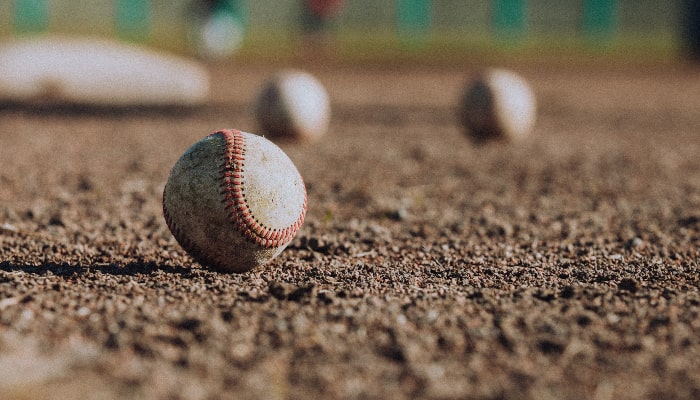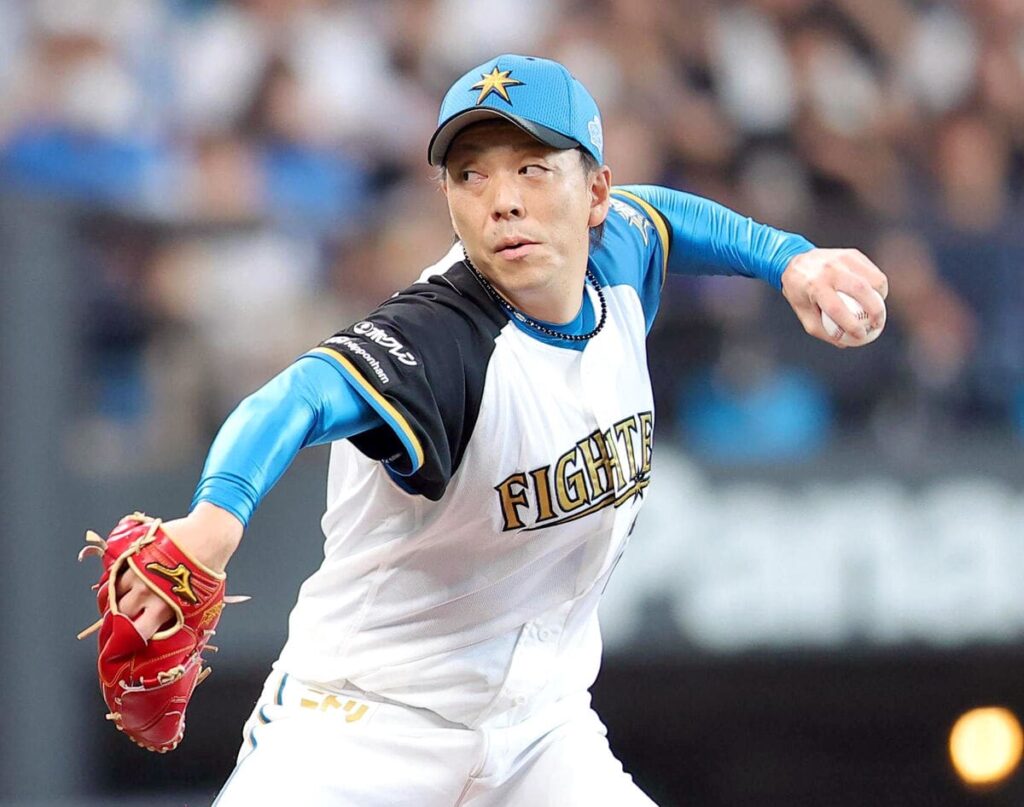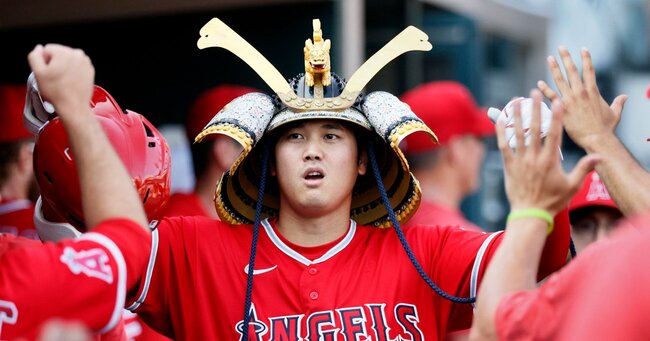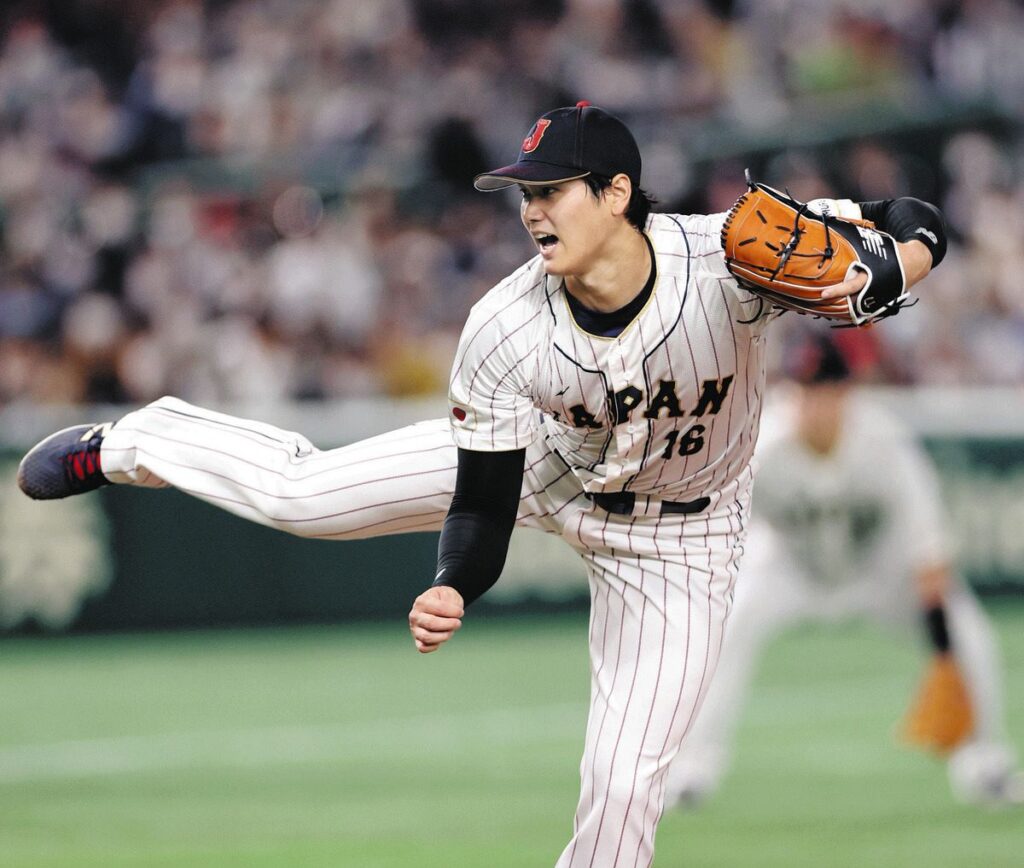
Shohei Ohtani has taken the Major Leagues by storm with his outstanding performances.
His success is due to meticulous training and discipline.
In this article, we’ll take a deep dive into Ohtani’s training routine, flexibility training, diet and nutrition, mental training, recovery training, off-season training, and his secrets to maintaining his physique.
First, let’s take a look at Shohei Ohtani’s basic training routine.
目次
- 1 Shohei Otani’s training routine
- 2 Shohei Otani’s flexibility training
- 3 Shohei Otani’s diet and nutritional management
- 4 The importance of mental training
- 5 Recovery training and injury prevention
- 6 off season training
- 7 The relationship between training and performance
- 8 Shohei Otani’s secret to maintaining his physique
- 9 Evolution of training to support success
- 10 Shohei Otani training facilities and equipment
- 11 Shohei Ohtani’s training challenges
Shohei Otani’s training routine
Behind Shohei Ohtani’s outstanding performance is a thorough training routine.
His training emphasizes both strength and endurance training, aiming to maximize performance while maintaining a balanced total body workout.
Here, we take a closer look at Otani’s specific training routine.
Strength training details
Shohei Ohtani’s strength training aims to train all the muscles of the body evenly.
His training program focuses specifically on the following:
-
Upper Body Strength : Upper body strength is essential for generating pitching speed and hitting power. Otani incorporates exercises such as bench presses, dumbbell presses, lat pulldowns, and rowing. These exercises improve strength in your chest, shoulders, back, and arms, creating a foundation for strong performance in both pitching and hitting.
-
Lower Body Strength : Lower body strength provides stability and power. Workouts such as squats, deadlifts, leg presses, and calf raises strengthen Ohtani’s thigh, calf, and buttock muscles. Squats and deadlifts, in particular, are important exercises for improving overall body strength and are responsible for his explosive power.
-
Core Training : Core strength is the foundation that supports movement throughout the body. Through planks, sit-ups, and medicine ball exercises, Otani strengthens his abdominal and back muscles. A strong core is essential for efficient power transfer during the swing and stability when pitching.
-
Explosive training : Explosive training is important for developing explosive power. Exercises such as box jumps, medicine ball slams and cleans improve Ohtani’s reflex speed and explosive power. This gives him faster and more powerful movements in both pitching and hitting.
Training to increase endurance
Endurance is essential for Shohei Ohtani to maintain high performance during matches.
His endurance training aims to balance aerobic and anaerobic exercise.
-
Aerobic exercise : Otani incorporates aerobic exercises such as running and cycling to strengthen his cardiopulmonary function. Aerobic exercise is important not only for improving endurance but also for improving oxygen supply throughout the body and maintaining stamina during a match. He improves his cardiopulmonary function by running long distances at a steady pace and by doing interval training.
-
Anaerobic exercise : Anaerobic exercise is effective for increasing muscle strength and endurance at the same time. Otani incorporates sprint training and high-intensity interval training (HIIT). These workouts increase both muscle strength and endurance by repeating high-intensity exercises over short periods of time.
-
Cross-training : Cross-training is a training method that combines a variety of exercises. Through cross-training, Otani effectively trains different muscle groups while keeping his whole body balanced. This prevents you from putting too much stress on certain muscles and joints, reducing your risk of injury.
-
Recovery and Rest : Recovery and rest are also important for increasing your endurance. Otani takes sufficient rest after training to promote muscle recovery. By incorporating recovery methods such as massage, icing, and stretching, you can recover from muscle fatigue and prepare for the next training session.
These are the details about Shohei Ohtani’s strength training and endurance training.
His training routines are designed to maximize performance while maintaining total body balance.
These efforts are the foundation of his outstanding performance.

Shohei Otani’s flexibility training
Flexibility training is essential to Shohei Otani’s outstanding performance.
By increasing flexibility, we aim to prevent injuries and improve movement efficiency, maximizing performance during matches.
Here, we take a closer look at Otani’s importance of stretching and how he incorporates yoga and Pilates.
Importance of stretching
Stretching is the basis of Shohei Otani’s flexibility training.
Stretching is important for increasing muscle flexibility and increasing joint range of motion.
-
Improved performance : Stretching allows your muscles to move more smoothly and more efficiently. This increases the speed and power of your swings and pitches, leading to improved performance. In particular, improving the flexibility of your shoulders, hips, and hamstrings will make your throwing and hitting movements smoother.
-
Preventing injuries : Stretching can also help prevent injuries by keeping your muscles and joints flexible. Stiff muscles and limited joint range of motion can increase your risk of injury, but stretching can help reduce these risks. Otani stretches thoroughly before and after training every day to prepare his muscles and joints.
-
Promotes recovery : Stretching is also important for recovery after training or a match. It relieves muscle tension and improves blood flow, helping to relieve fatigue. Otani incorporates stretching into his routine after matches and training to promote muscle recovery.
How to incorporate yoga and pilates
Shohei Ohtani uses yoga and Pilates to improve his flexibility and balance.
These exercises not only increase muscle flexibility but also have a mental relaxing effect.
-
Benefits of Yoga : Yoga is an exercise that stretches the muscles of the whole body while breathing deeply. Otani improves his flexibility and balance through yoga. He especially incorporates poses that improve the flexibility of his hamstrings, back, and shoulders. Yoga also has a relaxing effect on the mind and body, helping him to relieve tension before a match.
-
How to use Pilates : Pilates is an exercise that strengthens your core muscles while increasing flexibility throughout your entire body. Otani strengthens his core strength and improves his posture through Pilates. Pilates exercises improve overall body stability by strengthening your abdominal, back, and pelvic floor muscles. This makes your throwing and hitting movements more stable and improves your performance.
-
How to include it as part of your routine : Ohtani incorporates yoga and Pilates into her daily training routine. Several times a week, I perform these exercises under the guidance of a professional instructor, working to continually maintain my flexibility and balance. I also incorporate poses and exercises that are easy to do at home to maintain my flexibility on a daily basis.
These are the details about Shohei Otani’s flexibility training.
Understanding the importance of stretching and how he incorporates yoga and Pilates will help you understand the importance of flexibility training behind his outstanding performance.
These efforts have been key factors in his success.

Shohei Otani’s diet and nutritional management
Behind Shohei Ohtani’s outstanding performance is a strict meal plan and nutritional management.
His diet is focused on a balanced diet high in protein and he also makes use of nutritional supplements.
Here’s a closer look at Ohtani’s high-protein meal plan and how he uses nutritional supplements.
high protein meal plan
Shohei Ohtani’s meal plan is built around high protein to promote muscle repair and growth and maximize the effectiveness of his training.
-
Major Protein Sources : Otani consumes a variety of protein sources, including chicken, fish, eggs, and soy products. These foods are rich in essential amino acids, which are essential for muscle repair and growth. In particular, chicken breast and salmon often appear in his diet because they are low in fat and high in protein.
-
Meal Timing : Otani emphasizes consuming protein at the right times before and after training. During your post-workout recovery window, have a protein shake or a high-protein snack to promote muscle repair. Additionally, by dividing your meals into multiple meals throughout the day, you keep your blood sugar levels stable and maintain your energy levels.
-
Balanced nutritional intake : In addition to a high-protein diet, I also consume plenty of vegetables, fruits, and whole grains. Adequate supply of vitamins and minerals helps maintain normal body functions and boosts immunity. His diet has a balance of protein, carbohydrates, and fat, and he chooses nutritious foods.
How to use nutritional supplements
Shohei Otani also actively uses nutritional supplements to supplement the nutrients he needs.
This allows us to maintain high performance during daily training and matches.
-
Protein supplements : Protein shakes are an important part of Ohtani’s diet plan, especially after training to support muscle recovery and growth. Protein supplements are quickly absorbed by the body, making them an effective muscle-building supplement.
-
Vitamins and Minerals : I also take vitamin and mineral supplements, including Vitamin D, calcium, and magnesium, which are important for maintaining healthy bones and muscle function. I take supplements to cover any nutrients I don’t get enough of through my diet.
-
Amino acid supplements : We also incorporate amino acid supplements such as BCAA (branched chain amino acids) and glutamine. These supplements help prevent muscle breakdown and promote recovery. Particularly when taken before or during training, it can help improve endurance and performance.
-
Omega-3 fatty acids : We also incorporate omega-3 fatty acid supplements. Fish oil and flaxseed oil supplements can help reduce inflammation and support cardiovascular health. In particular, it is expected to be effective in aiding recovery after intense training.
These are the details about Shohei Ohtani’s high protein meal plan and how to utilize nutritional supplements.
His thorough nutritional management is the foundation for maximizing the effects of daily training and maintaining peak performance.
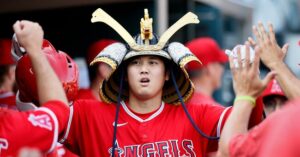
The importance of mental training
Behind Shohei Otani’s success lies a strong mentality.
Mental training is an important factor in improving concentration and dealing with pressure.
Here, we take a closer look at how Otani conducts mental training to bring out his best performance during competitions.
Methods to increase concentration
Concentration is essential for performing at your best in matches and training.
Shohei Otani uses several methods to improve his concentration.
-
Visualization : Visualization is a technique in which you visualize the achievement of your goal. Otani increases his focus on his goal by specifically imagining the moment when he succeeds. For example, he visualizes in detail his pitching form and the timing of his hit, and prepares for that scene, which improves his performance in the actual game.
-
Mindfulness : Mindfulness is a method of focusing on the present moment. Otani practices mindfulness before games to calm his mind and improve his concentration. By focusing on your breathing and relaxing your mind, you will reduce stress and tension during the game.
-
Establish a routine : Having a consistent routine before and during a game is also important for improving focus. For Ohtani, a consistent pre-game preparation and warm-up routine helps him stay calm and focused. The consistency of the routine helps him prepare his mind and body for the game.
How to deal with pressure
The ability to handle pressure is extremely important for top athletes.
Shohei Ohtani has specific methods for dealing with pressure during matches.
-
Positive self-talk : Positive self-talk is the technique of speaking positive words to oneself. Otani uses encouraging words to himself during games and training to increase motivation and reduce pressure. For example, repeating phrases such as “I can do it” and “I have had success in the past” helps him play with confidence.
-
Use breathing techniques : Deep breathing and abdominal breathing can slow your heart rate and help you relax. When Otani feels nervous during a match, he takes deep breaths to calm himself down. By regulating your breathing, you can maintain your concentration and play calmly.
-
Goal Setting and Feedback : Otani manages pressure by setting clear goals and working toward them. Having specific goals helps you narrow your focus and diffuse the pressure. I also develop myself and deal with pressure by accepting feedback from coaches and peers and working on areas for improvement.
-
Use your support system : Support from family, friends and teammates is important in dealing with pressure. Otani stays mentally stable by communicating with and receiving support from people he can trust. Words of advice and encouragement before a game are a great help.
These are the details about Shohei Ohtani’s importance of mental training.
His focus methods and ability to handle pressure allow him to perform at his best during competitions.
These mental training exercises have been a key factor in his success.

Recovery training and injury prevention
Behind Shohei Ohtani’s success is a thorough approach to recovery training and injury prevention.
A rehabilitation program and proper rest and recovery plan are essential to keep his body in top condition.
Here, we take a closer look at how Otani performs recovery training and prevents injuries.
rehabilitation program
Shohei Otani is undergoing a thorough rehabilitation program to recover from his injury and maintain his performance.
This includes various training and treatments carried out under the guidance of experts.
-
Individualized Rehabilitation Plan : Otani has an individualized rehabilitation plan depending on the type and condition of his injury. This includes stretching, strength training, and exercises aimed at improving range of motion under the guidance of a physical therapist or trainer. An individualized plan is important to speed injury recovery and prevent recurrence.
-
Low-impact exercise : During the early stages of rehabilitation, low-impact exercise is the focus. This includes exercises that put less pressure on the joints, such as water training or stationary biking, which will help gradually restore strength and prevent re-injury.
-
Exercises and Stretching : Exercises and stretching to increase muscle and joint flexibility are also important factors. This increases your range of motion and reduces your risk of injury. Otani stretches on a daily basis to maintain flexibility in his muscles and joints.
-
Utilization of rehabilitation equipment : Utilizing the latest rehabilitation equipment is also part of Otani’s rehabilitation program. This includes things like electrical stimulation therapy, ultrasound therapy, and massage devices. These devices can help promote muscle recovery and reduce pain.
Rest and recovery plan
Proper rest and recovery are just as important as training.
Shohei Ohtani has a strict rest and recovery plan in place to allow his body to recover from fatigue and prepare for the next training session or match.
-
Importance of sleep : Otani places great importance on getting quality sleep. Getting 7 to 9 hours of sleep each night helps your body repair and recover. Good sleep helps muscle growth and also leads to mental refreshment.
-
Taking rest days : Taking regular rest days is also part of Ohtani’s recovery plan. Rest days are important to relieve the body from the stress of training and competition and promote recovery. He incorporates light stretching and relaxation into his rest days to allow his muscles and joints to recover.
-
Nutrition and Hydration : Proper nutrition and hydration are also important components of recovery. Support muscle repair and growth by eating a high-protein diet and taking nutritional supplements. Hydration is also important; drinking adequate amounts of water will keep your body functioning properly and reduce fatigue.
-
Massage and ice : Massage and ice can help relieve muscle tension and increase blood flow. Ohtani regularly gets sports massages to help his muscles recover. Icing, especially after intense training or games, can help reduce inflammation and aid muscle recovery.
The above are the details about Shohei Ohtani’s recovery training and injury prevention.
His thorough rehabilitation program and rest and recovery plan support his peak performance in daily training and competition.
These efforts have been key factors behind his success.

off season training
The off-season is an important time for players to prepare their bodies for the next season.
Shohei Ohtani is making the most of this period to continue his training and work on improving specific skills.
Here, we take a closer look at Ohtani’s offseason training.
Continuation of training
Even in the off-season, Shohei Ohtani continues to train.
Rest and recovery are important, but it’s important to maintain a moderate amount of training rather than complete periods of rest.
-
Maintaining his base : Ohtani continues to do weight training and cardio to maintain his base fitness level. This will help you maintain your strength and endurance and keep you grounded for the performance you need during the season.
-
Balanced training : Off-season training involves a program that takes into account the overall balance of the body. This includes strength training, flexibility training, and endurance training to keep your whole body balanced and avoid putting too much strain on any one area.
-
Setting a recovery period : Otani allows his body a period of recovery while continuing to train. Regular rest days allow muscles and joints to recover and perform at their best in the next training session.
Initiatives to improve specific skills
The off-season is also a great time to improve certain skills.
Shohei Ohtani is using this period to improve his technique and learn new skills.
-
Improving pitching techniques : In order to improve his skills as a pitcher, Otani works with his pitching coach to improve his pitching form and learn new pitching techniques. Using video analysis and simulation, he analyzes his own pitching movements in detail and pursues efficient form.
-
Improving batting technique : In order to improve my skills as a batter, I work with a batting coach to improve my swing and batting technique. Timing and power are improved through repeated practice in the batting cage, tee batting, and batting practice against live pitching.
-
Learn new tactics : The off-season is also a great time to learn new tactics and strategies. Ohtani learns new tactics and approaches by rewatching match videos and studying the playing styles of other top players. This makes it possible to develop a variety of play styles in matches during the season.
-
Mental training : Strengthening your mental health is also an important off-season task. As part of Otani’s mental training, he learns exercises to improve concentration and how to deal with pressure. This reduces stress during matches and improves the ability to play calmly.
These are the details about Shohei Ohtani’s offseason training.
Continuing his training and working on specific skill development will help him prepare for next season and provide the foundation for performing at his best.

The relationship between training and performance
Behind Shohei Ohtani’s outstanding performance is his carefully planned training.
His training has a direct impact on his performance, and long-term performance improvement strategies underpin his success.
Here we take a closer look at how training affects performance and strategies for long-term performance improvement.
How training affects performance
-
Improved physical ability : Otani’s training maximizes his physical ability. Strength training improves his pitching speed and batting power, while endurance training increases his stamina during games. This allows him to maintain a high performance throughout the match.
-
Improved flexibility and balance : Flexibility training and balance training improve the efficiency of his movements and reduce the risk of injury. Otani maintains flexibility in his muscles and joints and balances his body by incorporating yoga and Pilates. This allows for a smoother throwing and hitting action and more efficient power transmission.
-
Mental Strength : Training has a big impact not only on your physical abilities, but also on your mental health. Through mental training, you can improve your concentration and learn how to deal with pressure, thereby maintaining your mental strength during matches. This will help you stay calm and make the right decisions during critical moments of the match.
-
Improving technique : Improving technique through training also greatly contributes to Otani’s performance. By adjusting the details of pitching and batting forms and pursuing efficient movements, accuracy and power are improved. We continually make technical improvements through practice with coaches and video analysis.
Strategies for long-term performance improvement
-
A structured training schedule : A structured training schedule is essential for long-term performance improvement. Otani continues to train both during the season and off-season to maintain his physical condition. Especially during the off-season, training focuses on improving specific skills to prepare for the upcoming season.
-
Continuous Feedback and Improvement : It’s important to accept feedback from coaches and trainers to continually improve your training content. Otani analyzes video of his own performance, identifies specific areas for improvement, and works on them. This allows him to constantly learn and evolve new techniques and strategies.
-
Balance between nutrition and rest : A balance between nutrition and rest is important for long-term performance improvement. Ensuring proper nutrition and adequate rest will help your body recover and maximize the effectiveness of your training. Otani uses a meal plan and supplements to ensure he gets the right nutrients and supports muscle repair and growth.
-
Focus on recovery and injury prevention : Recovery and injury prevention efforts are also essential to long-term performance. We carry out regular rehabilitation and recovery programs to minimize the risk of injury. Otani uses recovery techniques such as massage, stretching, and icing to maintain his physical health.
That’s more about the relationship between training and performance.
Planned training, continuous feedback, proper nutrition and rest, and recovery and injury prevention efforts support Shohei Ohtani’s long-term performance improvements.
By understanding these strategies, you can learn more about the factors behind his success.
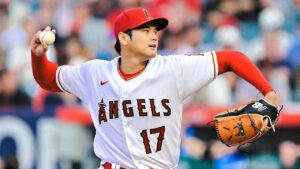
Shohei Otani’s secret to maintaining his physique
Shohei Ohtani’s physique plays an important role in his baseball performance.
In order to maintain his physique, a balance of health care, training and nutrition in his daily life is essential.
Here, we will take a closer look at Otani’s secret to maintaining his physique.
Health management in daily life
-
Proper sleep : Shohei Ohtani places great importance on getting quality sleep. Getting 7-9 hours of sleep each night helps your body recover and maximizes performance the next day. Good sleep helps repair muscles and strengthens immune function.
-
Stress Management : Stress can have a negative impact on physical performance, so Otani also strives to manage stress. By taking time to meditate, take deep breaths, and relax, I maintain mental stability and improve my concentration. This reduces tension and anxiety and maintains mental strength.
-
Daily Stretching : To maintain his flexibility, Ohtani stretches on a daily basis. Stretching helps prevent injuries by releasing muscle tension and increasing the range of motion of joints. He stretches thoroughly, especially before and after training and games, to prepare his body for the workouts.
-
Hydration : Staying hydrated is also an important part of maintaining good health. Ohtani drinks an adequate amount of water on a daily basis to maintain a proper fluid balance in his body. Hydration is essential to keep the body functioning properly and prevent fatigue from building up.
Balance of training and nutrition
-
Diverse training program : Otani’s training program includes a variety of exercises. By balancing strength training, endurance training, and flexibility training, you improve your overall fitness level. Weight training is especially important for increasing muscle strength and improving pitching and batting performance.
-
Nutritionally balanced diet : Otani makes sure to eat a nutritionally balanced diet. A high protein diet is essential to promote muscle repair and growth and maintain energy levels. Include plenty of protein sources such as chicken, fish, eggs, and soy products, as well as plenty of vegetables and fruits. This provides a sufficient supply of vitamins and minerals to maintain normal body functions.
-
Utilization of nutritional supplements : To supplement his nutritional needs, Otani also utilizes nutritional supplements. Protein shakes can help with post-workout recovery, and vitamin and mineral supplements provide nutrients that you can’t get from your daily diet alone. This supports muscle growth and repair and strengthens immune function.
-
Post-workout recovery : Post-workout recovery is also important for maintaining your physique. We incorporate massage, icing, and stretching to recover from muscle fatigue. This will keep your body in optimal condition for your next training or match.
These are the details about Shohei Ohtani’s secret to maintaining his physique.
By maintaining a balance between health management, training and nutrition in his daily life, he is able to always perform at his best.
These efforts have been key factors behind his success.

Evolution of training to support success
Shohei Ohtani’s success is based on his constantly evolving training methods.
He optimizes performance through the implementation of new training techniques and the use of a scientific approach and data analysis.
Here, we take a closer look at how Ohtani is evolving his training.
Introducing new training techniques
-
Use of biomechanics : Otani uses biomechanics to optimize his pitching and batting form. Biomechanics is a technique for scientifically analyzing body movements and pursuing efficient movement. Using cameras and sensors, he analyzes his pitching and batting movements in detail and adjusts the transmission of force and angles. This maximizes performance and reduces the risk of injury.
-
Latest training equipment : It is also important to have the latest equipment when training. Otani performs a variety of training using equipment such as balance boards, TRX, and battle ropes. This not only improves muscle strength and endurance, but also balance and core strength. In addition, by incorporating blood flow restriction training (BFR), it is possible to efficiently train muscle strength with low loads.
-
Virtual Training : Training using virtual reality (VR) and simulators is also included in Otani’s training program. This allows you to simulate situations similar to real matches and improve the accuracy of your play. In particular, pitching simulators are an effective tool for practicing pitching against various batters.
Use of scientific approaches and data analysis
-
Data-driven training : Otani uses data analysis to optimize his training programs. Using sensors and wearable devices, it collects data such as heart rate, calorie consumption, and muscle activity to understand the effectiveness of your training in real time. This allows you to individually adjust the intensity and content of your training, making it possible to train more efficiently.
-
Application of sports science : Training based on sports science research results is also important. Otani implements a training program that incorporates the latest knowledge in sports science. For example, we use scientifically proven methods such as exergenic (post-exercise oxygen consumption) training and high-intensity interval training (HIIT).
-
Motion capture and analysis : Use motion capture technology to analyze pitching and batting movements in detail. This allows you to discover subtle differences in movement and efficient movement patterns, and take specific actions to improve performance. Receiving data-driven feedback fosters self-improvement.
-
Recovery and Conditioning : Data analysis can also help with recovery and conditioning. Monitor muscle fatigue and recovery speed to design an appropriate recovery program. This allows you to optimize your training and post-match recovery and prepare for your next performance.
Here’s a closer look at the evolution of Shohei Ohtani’s training that has led to his success.
By introducing new training techniques and using scientific approaches and data analysis, he continues to perform at his best.
These efforts have been key factors behind his success.

Shohei Otani training facilities and equipment
Shohei Ohtani’s outstanding performance is supported by state-of-the-art training facilities and equipment.
The training equipment he uses and the state-of-the-art training environment play an important role in maximizing his physical abilities.
Here, we take a closer look at the training equipment Ohtani uses and the training environment he has set up.
Training equipment used
-
Weight Training Equipment : Otani uses a variety of weight training equipment to increase his strength. Examples include the bench press, squat rack, dumbbells, and kettlebells. These devices are used to train upper and lower body strength in a well-balanced manner and improve overall body strength.
-
Balance and Core Training Equipment : We use equipment such as balance boards, TRX, and medicine balls to strengthen your core and improve your sense of balance. In particular, TRX allows you to perform a variety of exercises using your body’s center of gravity, making it extremely effective for training muscle strength and balance at the same time.
-
Endurance Training Equipment : To increase endurance, we use aerobic exercise equipment such as stationary bikes, treadmills, and rowing machines. These pieces of equipment are essential for strengthening your cardiovascular fitness and maintaining your stamina during the competition. Stationary bikes and treadmills are especially great for interval training.
-
Recovery Equipment : To support recovery, Otani uses recovery equipment such as an icing machine, massage gun, and stretching machine. These devices promote muscle recovery after training and help prevent injuries. In particular, icing machines are important for reducing inflammation after intense training.
Introducing cutting-edge training environments
-
Dedicated Training Facility : Otani uses a dedicated training facility to create the optimal training environment. This facility is fully equipped with the latest training and recovery equipment, allowing you to train effectively based on your individual training plan.
-
Biomechanics Lab : The Biomechanics Lab is equipped with the latest technology to analyze body movements in detail. Using high-speed cameras and motion capture systems, we scientifically analyze pitching and batting forms in pursuit of optimal movement. This allows for improved performance and injury prevention.
-
Recovery Area : A dedicated recovery area is provided within the training facility. This area includes an ice bath, sauna, and massage room to support your post-workout recovery. Ice baths are used to reduce muscle inflammation and promote recovery, while saunas increase blood circulation and have a relaxing effect.
-
Nutrition Center : A nutrition center is also located within the training facility. A professional nutritionist is always on site to support Otani’s meal plan. Nutritional management is carried out to maximize training effects and maintain physical health through the provision of balanced meals and nutritional supplements.
These are the details about the training equipment and state-of-the-art training environment used by Shohei Otani.
These facilities and environment support his outstanding performance and are the foundation for maintaining his best condition.

Shohei Ohtani’s training challenges
Shohei Ohtani faces many training challenges in order to maintain his outstanding performance.
We take a closer look at how he deals with and overcomes these challenges.
Challenges faced in training
-
Maintaining sustained performance : Maintaining consistent performance over a long season is a big challenge for Ohtani. Continuous training and recovery are necessary to prevent accumulation of fatigue and decline in physical strength. In particular, as a two-way player, maintaining the performance of both pitching and hitting is extremely taxing.
-
Injury risk management : High-intensity training and repeated matches increase the risk of injury. This often places stress on joints such as shoulders, elbows, and knees, and an important issue is how to minimize this. Otani previously underwent Tommy John surgery, and measures are required to prevent recurrence.
-
Mental stress : Playing under high expectations and pressure causes mental stress. The mental burden increases during important stages of a match or when the performance does not go as expected. This raises concerns about decreased concentration and performance.
How to overcome those challenges
-
Regular recovery and rest : To maintain sustained performance, Ohtani incorporates regular recovery and rest. After training or games, we provide icing, stretching, and massage to promote muscle recovery. Taking a rest day allows your body to recover from fatigue and prepare for the next performance.
-
Balanced Training Program : We implement a balanced training program to reduce the risk of injury. I balance strength training, flexibility training, and aerobic exercise to avoid putting too much stress on any particular joint or muscle. We also regularly review and optimize the intensity and content of our training.
-
Conducting mental training : To deal with mental stress, Otani conducts mental training. I use methods such as meditation, deep breathing, and mindfulness to help me relax mentally and improve my focus. We also learn and practice stress management techniques through sessions with psychological counselors.
-
Support from experts : We receive support from experts such as trainers, physical therapists, and nutritionists to help ensure your training and health management. Expert advice is especially essential for injury prevention and recovery. We conduct regular health checks and have a system in place to detect and deal with problems early.
-
Leveraging data analytics : Training data is analyzed in detail to help improve performance and prevent injuries. We use wearable devices to collect data such as heart rate, calorie consumption, and muscle activity to optimize training plans. This allows you to maximize the effectiveness of your training and minimize the risk of injury.
These are the details about the challenges Shohei Ohtani faces in training and how he overcomes them.
His success is supported by appropriate measures and continuous efforts to address these challenges.
These efforts are the foundation for maintaining his outstanding performance.
